Stay in the know on all smart updates of your favorite topics.
22. Nature, never far away

This is the 22st episode of a series 25 building blocks to create better streets, neighbourhoods, and cities. Its topic is the way how the quality of the living environment benefits from reducing the contrast between urban and rural areas.
Photos from space show a sharp contrast between city and countryside. Urban areas are predominantly gray; rural areas turn green, yellow, and brown, but sharp contrasts are also visible within cities between densely built-up neighborhoods and parks. Even between neighborhoods there are sometimes sharp transitions.
The division between city and country
Large and medium-sized cities on the one hand and rural areas on the other are worlds apart in many respects and local government in municipalities would like to keep it that way. For a balanced development of urban and rural areas, it is much better if mutual cohesion is emphasized, that their development takes place from a single spatial vision and (administrative) organization and that there are smooth transitions between both. The biggest mistake one can made is regarding the contrast between city and country as a contradiction between city and nature. Where large-scale agriculture predominates in the rural area, the remaining nature has a hard time. Where nature-inclusive construction takes place in cities, biodiversity is visibly increasing.
The idea that urban and rural areas should interpenetrate each other is not new. At the time, in Amsterdam it was decided to retain several wedges and to build garden villages. Some of the images in the above collage show such smooth transitions between urban and rural areas: Eko Park, Sweden (top right), Abuja, Nigeria (bottom left), and Xion'an, China (bottom center). The latter two are designs by SOM, an international urban design agency that focuses on biophilic designs.
Pulling nature into the city
Marian Stuiver is program leader Green Cities of Wageningen Environmental Research at WUR. In her just-released book The Symbiotic City, she describes the need to re-embed cities in soil, water and living organisms. An interesting example is a design by two of her students, Piels and Çiftçi, for the urban expansion of Lelystad. The surrounding nature continues into the built-up area: soil and existing waterways are leading; buildings have been adapted accordingly. Passages for animals run between and under the houses (see photo collage, top left). Others speak of rewilding. In this context, there is no objection to a small part of the countryside being given a residential destination. Nature benefits!
Restoration of the rural area
The threat to nature does not come from urban expansion in the first place, but mainly from the expansion of the agricultural area. Don't just think immediately of the clearing of tropical rain woods to produce palm oil. About half of the Dutch land area is intended for cows. Usually, most of them are stabled and the land is mainly used to produce animal feed.
The development of large-scale industrialized agriculture has led to the disappearance of most small landscape features, one of the causes of declining biodiversity. Part of the Climate Agreement on 28 June 2019 was the intention to draw up the Aanvalsplan landschapselementen . Many over-fertilized meadows and fields that are intended to produce animal feed in the Netherlands were once valuable nature reserves. Today they value from a biodiversity point of view is restricted and they are a source of greenhouse gases. Nature restoration is therefore not primarily focusses at increasing the wooded area. Most of the land can continue to be used for agricultural and livestock farming, provided that it is operated in a nature-inclusive manner. The number of farmers will then increase rather than decrease.
Pulling the city into nature
There are no objections against densification of the city as long this respects the green area within the city. So-called vertical forests by no means make up for the loss of greenery. Moreover, space is needed for urban agriculture and horticulture (photo collage, top center), offices, crafts, and clean industry as part of the pursuit of complete districts. Nature in the Netherlands benefits if one to two percent of the land that is currently used to produce animal feed is used for housing, embedded in a green-blue infrastructure. Some expansion and densification also apply to villages, which as a result are once again developing support for the facilities, they saw disappearing in recent decades.
Finally, I mentioned earlier that nature is more than water, soils, plants, and trees. Biophilic architects also draw nature into the built environment by incorporating analogies with natural forms into the design and using natural processes for cooling and healthy air. The 'Zandkasteel' in Amsterdam is still an iconic example (photo collage, bottom right).
Follow the link below to find an overview of all articles.
Spectral Receives Investment from ABN AMRO Sustainable Impact Fund to Scale its Operations

Spectral, a pioneer in the integration of energy and information technologies and a highly impactful scale-up in the energy sphere, is excited to announce a major turning point in its expansion. Spectral has successfully secured an investment from ABN AMRO’s Sustainable Impact Fund (SIF). The fund invests in impact-driven companies seeking both social and financial returns. The investment will primarily be used to scale and professionalize operations.
AMS Conference 2024: Call for abstracts and special sessions

We invite you to contribute to the conference "Reinventing the City 2024 - Blueprints for messy cities?"
Deadline to submissions: November 14, 2023
Notification of acceptance: December 14, 2023
submit here>>
The AMS Scientific Conference (AMS Conference) explores and discusses how cities can transform themselves to become more livable, resilient and sustainable while offering economic stability. In the second edition of “Reinventing the City” (23-25 April 2024), the overarching theme will be <em>"</em>Blueprints for messy cities? Navigating the interplay of order and complexity'. In three captivating days, we will explore 'The good, the bad, and the ugly' (day 1), 'Amazing discoveries' (day 2) and 'We are the city' (day 3).
Call for abstracts
The AMS Conference seeks to engage scientists, policymakers, students, industry partners, and everyone working with and on cities from different backgrounds and areas of expertise. We therefore invite you to submit your scientific paper abstract, idea for a workshop or special session with us. Submissions should be dedicated to exploring the theme ‘Blueprints for messy cities?’. We especially invite young, urban rebels to raise their voice, as they are the inhabitants of our future cities.
Assessment
Our scientific committee responsible for the content of the conference program will assess all submissions and select a final program of contributions. Notification of acceptance will follow before 1 December 2023.
Topics
mobility | circularity | energy transition | climate adaptation | urban food systems | digitization | diversity | inclusion | living labs | transdisciplinary research
SUBMISSIONS AND CONTRIBUTIONS
| SCIENTIFIC PAPER ABSTRACTS |
We invite academics, industry partners, and professionals from all ages engaged in the related fields of urban design, governance, architecture, data science, engineering and/or sociology to submit an abstract for a conference presentation of your scientific paper (250-450 words).
| WORKSHOPS |
If you have a workshop proposal, please outline its purpose, the specific knowledge, techniques, or practices it covers, its objectives and learning outcomes, teaching strategies and resources, target audience, and any prerequisites, including the required level of experience (250-450 words).
| SPECIAL SESSIONS |
Next to scientific papers and workshops, we encourage you to submit different types of special sessions. These special sessions can include interactive forums, excursions, or practical demonstrations, depending on the subject and objectives. When submitting your proposal for a special session, we ask you to clearly highlight the session's objectives, expected collaborators (if applicable), the intended audience, and the type of session. Please also indicate whether you prefer an online or in-person format. Please note that you will be responsible for the content and organization of the session (250-450 words).
Click here to visit the event page and find more information on details about the Scientific Conference.
Hyperefficiënt zonnepark dankzij smart grid

In de polder in Schagen werken we in een innovatieve samenwerking aan het zonnepark van de toekomst: De Dijken. Dit park heeft niet alleen de nieuwste PV-panelen, maar ook plek voor mobiele batterijen. Dankzij die batterijen en ons Smart Grid Platform maken we hyperefficiënt gebruik van de beschikbare zonne-energie. In het artikel op onze website lees je meer over deze bijzondere samenwerking en onze ambitieuze toekomstplannen.
Terugkijken SES community digitale sessie congestiemanagement 2.0 en financieringsregeling
Op dinsdag 5 juli, organiseerde de werkgroep slimme energie systemen (SES) van de Provincie Noord-Holland, TenneT en Liander een digitale sessie voor de SES community. Hierin vertelde Liander over congestiemanagement 2.0 en gaf de Provincie inzicht in de aankomende subsidieregeling voor SES projecten.
Updates ontvangen van en/of meedoen aan de community? Mail naar cato.bechtold@hiemstraendevries.nl
Transities versnellen met slimme investeringen
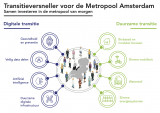
Samen slimmer investeren: daaraan werken Amsterdam Economic Board en Metropoolregio Amsterdam in de ‘Transitieversneller voor de Metropool Amsterdam’. Met dit inspiratiedocument versnellen zij de transities die nodig zijn voor de slimme, groene en gezonde metropool van morgen.
Er zijn acht investeringsthema’s geselecteerd: gezondheidsbevordering en preventie, waterstof, slimme elektriciteit, circulaire bouw, slimme mobiliteit, veilig data delen, artificial intelligence (AI) en een duurzame digitale infrastructuur. Deze thema’s bouwen voort op de kracht van onze regio en zijn in lijn met de financiële mogelijkheden en doelen vanuit Den Haag en Brussel.
Lees het artikel voor meer informatie.
New e-book: Kennisdossier Zonne-energie

I updated and put together 75 posts and articles about the energy transition in a new e-book (in Dutch) 'Kennisdossier Zonne-energie' (120 pages). If you interested, download it for free with the link below.
The challenges in the circular energy transition
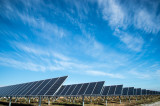
The energy transition is in full swing. Besides manpower, it requires a lot of materials, products and infrastructure. Windmills, solar panels, batteries and water pumps contribute fully to this transition, but are still hardly purchased, produced or reused in a circular manner. With the global economy changing and the shortages of raw materials growing, it’s important to look at the materials we use in the energy transition. How can we limit the negative impact of these materials needed for the energy transition?
It's clear that this question is on the minds of several partners. For example, at the Transition Days 2021, the Province of North Holland suggested that a knowledge agenda should be drawn up. In the meantime, our partners AMS Institute and the City of Amsterdam have started a project aimed at the reuse of solar panels in Amsterdam-Southeast and linked this with social issues. Next to that, the companies Pontiflex and Cenex Netherlands (in collaboration with the University of Applied Sciences) are focusing on the reuse of wind turbine components in new bridge structures and EV batteries.
On March 17, Amsterdam Smart City organized a work session during the Demoday Circular & Energy so our partners could discuss their input and vision on the importance of a circular energy transition. Some think it's important to have an ''integrated approach to circularity and energy'', others seek further ''stimulus that enables circular reuse of materials''. But if we want to scale up the energy transition circularly, what obstacles and opportunities do we see together? The challenges and obstacles are mapped for the different physical products via the digital tool Miro. Check out the English version of the Miro board here.
The key challenges raised by the participants:
1. Not all procurement procedures allow for circular material use or are limited to steel and concrete. Or requirements and criteria do not match.
2. Local and regional logistics in relation to transport and labor costs.
3. The business case: often a low financial return and therefore less attractive to the market. Practice shows that to be able to experiment, subsidy or other funding is needed.
4. Laws, regulations and certification of circular products stand in the way. Often the same norms and standards must be applied as for new products.
5. Education to encourage a new generation of students to work more with biobased and circular materials in projects
Now that the obstacles are visible, the challenge is to find a common approach. Through a follow-up session, Amsterdam Smart City will invite the partners again to think about the next steps. In the end we need each other to take the circular energy transition one step further.
If you have any thoughts on this topic or have a related question for us, please let us know in the comments or send an email to francien@amsterdamsmartcity.com.
Smart grids: where social and digital innovation meet

The 20th episode of the Better Cities - The contribution of digital technology-series is about electrification, as part of climate adaptation. Based on this theme, both the role of digital technology and the relationship between digital and social innovation will be illustrated.
The Dutch government has dug deep into its pockets to get citizens and companies to cover their roofs with solar panels and to encourage the construction of solar meadows. Favorable tax facilities have been created and a generous so-called ‘salderingsregeling’ has been set up, and with success.
Solar energy and grid overload
Most citizens are very satisfied with solar panels and their impact on the energy bill. So far, no audit office has checked what the government pays for a kilowatt hour of electricity that citizens produce on their roofs. This includes the costs of the aforementioned (tax) facilities and subsidies, as well as the billions in investments in grid reinforcement resulting from the large-scale (re)delivery to the grid of decentral generated energy. In fact, when there is more supply than demand for electricity on the grid, the wholesale price of electricity is negative. In that case, thanks to the ‘salderingsregeling’, the electricity company pays back the full amount and also has to pay(!) companies that buy electricity at that time!
And now? Now the government suffers the consequences and is limiting the growth in the number of solar panels. Many requests for the large-scale generation of solar energy are waiting for a license because the electricity grid in large parts of the Netherlands is overloaded.
There are three ways to solve this problem. The first is to increase the capacity of the high-voltage grid. The second is large-scale storage of electricity, both for the short and the long term. The third is network management. The least elegant solution here is curtailment which means that the capacity of all solar meadows and wind farms is only used for 70%. A better alternative is the construction of smart grids; this is what this article is about. Smart grids have more to do with digitization than with extra cables. *A smart grid is an energy system in which PV panels, electric cars, heat pumps, household appliances, large but also small-scale storage systems and substations are intelligently connected.*However, more attention to energy storage is desperately needed too and high-voltage grid reinforcement will also be inevitable locally.
From centralized to decentralized electricity supply
Electricity infrastructure around the world is designed for centralized electricity generation, characterized by one-way traffic from producer to consumer. Now that many consumers have also become producers ('prosumers') and solar meadows and wind farms are being developed in many places in addition to the usual power plants, the network structure of the future must be decentralized. It will consist of two or three levels. Together, these will ensure a stable system in which much more electricity is used than today. This new structure is at the forefront of development. In 2016, approximately $47 billion was spent worldwide on infrastructure and software to make the electricity system more flexible, integrate renewable energy and better serve customers. The book Promoting Digital Innovations to Advance Clean Energy System (2018) is an excellent overview of these developments. This book can here be downloaded for free.
Most prosumers supply an average of 65% of the generated electricity back to the main grid. Own storage capacity is part of the solution and creates a mini grid that significantly reduces the need to supply back. Otherwise, there are times when the main grid benefits from supplying back locally generated power. Therefore, the next step is for main and mini grids to communicate with each other. In this case we speak of a smart grid: The management of energy production in large-scale power stations (including wind and solar parks) will then take place in conjunction with the regulation of the inflow and outflow of electricity from the main grid to the mini grids. This may also include signals to households to charge or discharge batteries, turn on the boiler, postpone charging the car or stop the production of energy. An automated monitoring and control system is a necessary enabler here.
The exchange of data between mini grids and the main grid has many privacy aspects, especially if the grid operator can influence what goes on 'behind the meter'. An intermediate layer between main and mini grids offers a solution. We then speak of a microgrid. This is a kind of switch between the main grid and the micro grid, that enables the micro grid even to function autonomously in the event of a failure of the main grid.
A microgrid contains three elements:
1. Installation(s) for local energy production for more than one user (usually a neighborhood): solar panels, wind turbines, cogeneration, heat pump(s), biomass power station, hydropower turbine and possibly an emergency production system (generator).
2. A storage system: home and neighborhood batteries and in the future also supercapacitors and chemical latent heat storage.
3. A digital management system to guarantee the balance between the production of and the demand for electricity, to determine how much energy is taken from or returned to the main grid and which calculates the costs and benefits per household.
The micro-grid
In a micro grid, households can exchange their surpluses and shortages of electricity without the direct intervention of the grid operator or the electricity producers. These are solely related to the surpluses and deficits of the entire microgrid, eliminating the need to interfere in the mini grids of individual households. Thanks to the real-time monitoring of electricity production and consumption, the price of electricity can be determined minute by minute. For example, the households that are part of the microgrid can agree to purchase as much electricity as possible when the price is low. At such moments, home batteries, electric cars, any neighborhood battery and boilers and hot water barrels will be charged and heated. This can be done fully automated. For example, the Powermatcher, an open-source application developed by TNO, which now employs 1000 people in the Netherlands. This video illustrates how a microgrid works.
A microgrid gains extra value if the users form an energy cooperative. Here it is possible to decide about the algorithms that regulate the circulation of the current in the microgrid. A cooperative can also take care of the management and maintenance of the solar panels of other collective facilities such as a neighborhood battery, local energy sources (wind or solar park or geothermal heat). The cooperative is also a good means of negotiating with the network operator and the energy company.
The virtual power plant
By linking heat pump technology, energy generation and energy storage at the district level, a significant step can be made with the energy transition. Here are some examples.
The Amsterdam virtual power plant
An almost classic example of a microgrid is the Amsterdam virtual power plant. Here, 50 households produce electricity with solar panels, store it in-house and trade it according to availability when the price on the energy market is most favorable.
Future Living Berlin
This is a nice small-scale practical example developed by Panasonic. Future Living Berlin consists of a neighborhood with apartment buildings for a total of 90 households. The residential buildings are equipped with 600 solar panels that, together with a collective battery system, provide a constant flow of sustainable energy. Among others, to power the seventeen central air/water heat pumps, of which two to five per residential building are installed in a cascade and provide heating and hot tap water. The shared cars and communal washing machines are good for the environment, and they also promote neighborly contact. The Internet of Things also plays a role in controlling the heat pumps. Installers maintain remote access to these systems via a cloud platform.
Tesla's Virtual Power Plant
Tesla has built a virtual power plant in Australia for 50,000 households. Every household has solar panels, with a capacity of 5 kilowatts and a Tesla Powerwall battery of 13.5 kilowatt-hours. As a result, the power station has a capacity of 250 megawatts and a storage capacity of 675 megawatt-hours. Here too, every household charges the battery and possibly the car with self-generated energy and with cheap energy if the supply is large, and they supply the energy they have left to the electricity companies at the market price. In this way the participants save 20% of the annual energy costs.
The ultimate step: autarky
Companies that want to use solar panels and supply the surplus of energy back to the grid are also increasingly encountering the capacity limitations of the main grid. The result is that an increasing number of businesses take power supply into their own hands and even completely refraining from being connected to the grid. Commercial solutions for local virtual power grids are now available, for which companies such as Alfen and Joulz are involved. One of the options is Energy-as-a-service, where the business customer does not invest in an installation but pay a fixed amount per month.
The use of blockchain
Blockchain enables exchanging surplus energy between prosumers without human intervention. Brooklyn Microgrid is a 'benefit corporation', to which every resident who has solar panels can connect and buy energy directly from or sell energy to another user (P2P), without the intervention of the electricity company. Blockchain provides a secure, transparent, and decentralized ledger of all energy production and consumption data and transactions based on 'smart contracts'. These are self-executing programs that automate the exchange of value (here, the amount of electricity) on bilaterally agreed terms. Home and neighborhood batteries, individual and collective heat pumps and charging stations for cars can also be connected to this system.
A similar pilot with blockchain is taking place in the southern German town of Wilpoldsried. Project partners Siemens, grid operator AllgäuNetz, Kempten University of Applied Sciences and the Fraunhofer Institute for Applied Information Technology (FIT) have jointly developed the platform and an app, considering the given load capacity of the grid.
Digital twins: need for oversight
Smart grids, ranging from local mini and micro grids to regional applications, are a substantial alternative to grid reinforcement. At the same time, they create new electricity flows, especially where there is a direct exchange between smart grids and the main grid. That is why there is a growing need to map these flows and regulate them where necessary. Digital twins can be helpful here.
Delft University of Technology has developed a small digital twin for a quarter of the Dutch high-voltage grid. This will gradually be expanded to encompass the entire network. To this end, the existing high-voltage hall of TU Delft will be converted into an Electrical Sustainable Power Lab, which will mirror the electricity network, including high-voltage pylons, sources of wind and solar energy, energy storage and distribution networks. This allows, for example, to simulate the effect of linking a new wind farm. As a result, it provides an overview of all bottlenecks and thus lays the foundation for better network management or the choice for grid reinforcement.
But there are also many promising developments at the local level. For that we must be in the US for the time being. The Cityzenith company, together with Arizona State University, has developed the SmartWorldOS digital twin and is making it available to Phoenix, Las Vegas and New York. Each of these cities is building a digital twin of a part of the center. The twins comprise all the buildings, transportation systems and infrastructure of the affected areas and are powered by sensors sent over a 5G network. They aggregate 3D (space) and 4D (time) data about the actual energy use and visualize and analyze it. Subsequently, the impact of other forms of lighting, heating, but also electricity generation with solar panels on the roof, on the facades and in the windows can be simulated and measured and a decision can be made about their implementation.
I have compiled a dossier on many aspects of the use of solar energy. This dossier deepens this article in several respects. Innovations in solar panels, the use of window glass to generate energy, the growth of solar energy in the Netherlands and the storage of electricity are discussed. Those who are interested can find this file by following the link below.
Smart Energy Systems: een integrale en schaalbare weg naar duurzame bedrijventerreinen
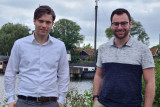
Door de bedrijven op bedrijventerreinen samen te laten werken aan integrale verduurzaming kan er op grote schaal duurzame energie opgewekt worden en CO2-uitstoot voorkomen worden. Samen met Greenchoice werken we aan een slim nieuw product: Smart Energy Systems.
CO2-uitstoot, onbenutte daken en netcongestie
Bedrijventerreinen zijn grootverbruikers van elektriciteit en bieden met hun grote dakoppervlakten ongekende mogelijkheden voor duurzame energieopwek. Toch wordt er op dit moment nog lang niet maximaal ingezet op de verduurzaming van deze gebieden. En als het al gebeurt, wordt kennis en kunde niet gedeeld, en worden oplossingen niet integraal op het hele terrein uitgevoerd. In plaats van samenwerken wordt er ingezet op de verduurzaming van één pand zonder te kijken naar de mogelijkheden om samen te verduurzamen, waar dan ook het teveel aan opgewekte energie teruggeleverd wordt aan het energienet. Dat verergert de al bestaande problemen met netcongestie.
Smart Energy Systems
In Smart Energy Systems hebben deelnemende bedrijven de keuze uit een ‘menukaart’ aan maatregelen. Daarop staan opties variërend van het plaatsen van zonnepanelen tot inzicht in verbruik tot het timen van je verbruik met je eigen opwek. Door die integrale aanpak en omdat meerdere bedrijven op het terrein tegelijkertijd verduurzamen kan er meer en sneller worden verduurzaamd.
Plug and play
Vanaf eind oktober begint de pilot bij drie bedrijventerreinen. De verwachtingen zijn hoog. Niet alleen voor de deelnemende bedrijventerreinen, maar ook voor toekomstige deelnemers. Door de ontwikkelingen op de markt goed in de gaten te houden en een vinger aan de pols te houden bij de pilotpartijen werken we aan de uitbreiding van de menukaart met nog meer duurzame en rendabele maatregelen, een gepersonaliseerde roadmap per terrein en een kopieerbare standaard voor nog meer impact.
We avoided 2.071 tonnes of CO2 emission in 2020!
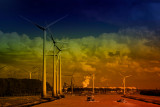
We avoided 2.071 tonnes of CO2 emission in 2020. The amount equals to 207 people’s yearly CO2 emissions. Are you wondering how we did it? Read our Impact Report!
Alle sprekers bekend van de Smart Energy Community morgen (dinsdag 8 juni)

Beste allen,
Jullie hadden nog een update tegoed, aangaande het panel dat morgen discussieert in de laatste editie van de Smart Energy Community van dit seizoen.
We gaan met deze 3 experts in op de toekomstverwachtingen voor slimme energiediensten:
- George Trienekens van TenneT,
- Marten van der Laan van Hanzehogeschool,
- Michel Muurmans van Eneco
Het hele programma kunt u hier vinden:
https://www.smartenergycommunity.nl/webinar8juni2021
Zoncoalitie - Altijd de beste keuze

Wat eind 2015 begon als een ambitieus initiatief vanuit Amsterdam Smart City, groeide uit tot een volwaardige en professionele organisatie dat nu alweer enkele jaren op eigen benen staat. Een mooi resultaat uit een jarenlange samenwerking met tientallen partijen, waaronder Alliander, de Gemeente Amsterdam, Tertium en natuurlijk de Zoncoalitie-leden zelf! Super gaaf om te zien hoe ver ze zijn gekomen. Mede dankzij de Zoncoalitie wordt het steeds makkelijker voor vastgoedeigenaren en gemeenten om zonnestroom van daken te krijgen.
Benieuwd waarom ik er over begin? De Zoncoalitie heeft een nieuwe bedrijfsvideo gelanceerd.
Klik hier om het te bekijken!
Meet the five stepdaughters of the energy transition
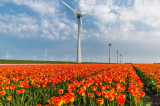
Last months, I wrote short essays about controversial aspects of the energy transition: geo-engineering (CCS included), biomass, geothermal energy, hydrogen and nuclear power (in Dutch). With these articles I tried to clarify my thoughts and to share my conclusions with others. At the end of the fifth article, I arrived at a - provisional - conclusion in 11 short phrases. I wonder whether you agree....
Space to fit 3.250.000 solar panels on Amsterdam rooftops

Energy ambitions of the City of Amsterdam
The City of Amsterdam has the ambition to become climate neutral by 2050. To achieve this, major transformations of, among others, the current energy system are required.
To illustrate, the City wants to eliminate the use of natural gas by 2040, phase out fossil fuels by 2050, and have 80% of the electricity that households use to be generated by solar and wind energy in 2030. Regarding the latter, Amsterdam aims to install a total solar energy capacity of 550 megawatts (MW) by 2030. Taking into account modern solar panels of 330 watt-peak, this adds up to 1.67 million solar panels.
With these ambitions set, what is the 'true' implementation potential for solar panels in Amsterdam – in terms of space on the city's rooftops? Which neighborhoods, streets, or even houses have the highest yield? And how can this be calculated best? The PV Advent Calendar project, led by AMS institute and TU Delft, investigates the city's solar panel implementation potential.
True solar panel implementation potential up to 6.5x bigger
A tool – also referred to as the “multi-layer framework” – developed for the PV Calendar project measures the optimal allocation of solar panels for each roof section.
The tool calculates that a total of 3.250.000 solar panels can be installed on Amsterdam rooftops. That means in Amsterdam there’s room to potentially install 6.5 times as many photovoltaic (PV) systems than the 500,000 currently installed on the city’s roofs.
What would this look like in the city? To give you an impression, with the true potential of 3,25 million solar panels installed this comes down to approximately 6.5 solar panels per residential address (taking into account 527755 addresses in total). The tool calculates that 1/4 Amsterdam’s electricity consumption could be solar based... Click on the link to read the full article >>
📣 Solar Energy needs Smart Inverters 📣

Commissioned by the FAN foundation, I set up a study into the connectivity of residential PV inverters in The Netherlands, which was conducted with our research partner Delta-EE.
Many residential PV inverts offer some sort of Smart Energy insight, and many newer inverters offer remote control. Yet there are some great challenges that hinder optimal use of solar energy.
• Awareness on the existence of smart functionalities of inverters, and on possible benefits, is low.
• Even today, not all new installs are smart inverters. These inverters will remain operational for 10 – 15 years, or longer.
• The use of smart functionalities of inverters by the energy sector is still in its infancy.
These are some of important findings from our research, that are also relevant for other countries.
According to the FAN foundation, this is a missed opportunity. With the expected growth of residential PV systems in the future, and the upcoming replacement market for older systems, FAN calls on installers and suppliers to supply as many smart inverters as possible.
You can read more about this research and download the full report, in English or in Dutch.
You can also download 2 other researches I carried out in the FAN Flexmonitor series: Smart EV chargers and Smart Heatpumps.
Wat is jouw energielabel?
HvA-studenten Data Science voorspellen voor Vattenfall het energielabel voor gebouwen die dat nog niet hebben, om de energietransitie te versnellen.
Heeft jouw kantoorgebouw energielabel D? Dan is er werk aan de winkel. Om de klimaatdoelen uit het Parijsakkoord te halen en de opwarming van de aarde te beteugelen, moet de gebouwde omgeving versneld verduurzamen en vanaf 2023 minimaal energielabel C scoren. Een vernieuwd energielabel moet daarbij helpen. Maar wat als je dat nog niet hebt? HvA-studenten buigen zich voor partner Vattenfall tijdens een hackathon over de vraag: Kan voor gebouwen zonder energielabel een schatting voor een energielabel worden bepaald aan de hand van beschikbare data?

Na twee uur begaf de dataserver het al. Niet zo gek, er was haast en drukte: binnen een hackathon van een kleine week moesten de studenten van minor Data Science allemaal tegelijk de beschikbaar gestelde data over energieverbruik van Vattenfalls klanten analyseren. Met als doel: een zo accuraat mogelijk voorspelmodel voor de energielabels van gebouwen. Normaal ben je al weken lang bezig met datasets verkennen voordat je over kan gaan op opschonen, categoriseren, analyseren en voorspellen middels machine learning, stelt Rick Wolbertus, docent-onderzoeker Data Science van lectoraat Energie en innovatie. ‘Nu moesten ze dat in enkele dagen doen. Daarin zie je de kracht van een hackathon: binnen een bizar korte tijd krijg je verrassende uitkomsten; een groepje had een 84% accuraatscore in hun voorspelling voor energielabels, dat is echt knap.’
Energielabel bepalen
Van woningen tot fabriekshallen, het energielabel is een middel om de energie-efficiëntie van gebouwen te kwalificeren. Sinds begin dit jaar heeft het energielabel een metamorfose ondergaan, kent het andere kwalificeringseisen en is het bovendien verplicht geworden voor alle gebouwen. Met de nieuwe en vereenvoudigde bepalingsmethode (NTA 8800) wordt de energie-efficiëntie nu uitgedrukt in het energieverbruik per vierkante meter gebouwoppervlakte. Deze indicator is goed te vergelijken met werkelijk energieverbruik en moet beter inzicht geven in de energiezuinigheid van het gebouw. Daar kunnen maatregelen aan gekoppeld worden voor verduurzaming.
De hackathon voor energielabels is het eerste vraagstuk uit de praktijk voor studenten die voortkomt uit de tienjarige samenwerking tussen HvA Centre of Expertise Urban Technology en energieleverancier Vattenfall. De hackathon levert snel een frisse blik op, vertelt Tim Pellenkoft, data scientist bij Vattenfall. ‘De studenten, met verschillende achtergronden in onder andere journalistiek, technische bedrijfskunde en aviation, hebben andere denkbeelden die tot nieuwe inzichten leiden. Zo zagen zij patronen in bouwjaar, waar ik zelf nog niet op was gekomen. Oud bouwjaar? Vrijwel altijd een laag energielabel. Daar tegenover staan nieuwere gebouwen, die met een hoger label vaak beter zijn geïsoleerd.’
Het is aan de studenten om zulke variabelen, die invloed hebben op het energielabel, uit de data te halen. Daarin werden verrassende keuzes gemaakt, zag ook Wolbertus. ‘De data toonden enorme verschillen in verbruik tussen gebouwen van diverse industrieën. Industrieën die gigantische machines in hun gebouw gebruiken, die wil je scheiden van andere type bedrijven. Dus moet je categorieën maken en die in de voorspelling (middels machine learning-modellen) van elkaar scheiden. Zo voorkom je scheve analyses en kun je accurate verbanden leggen. Daar kwamen studenten zelf mee!’
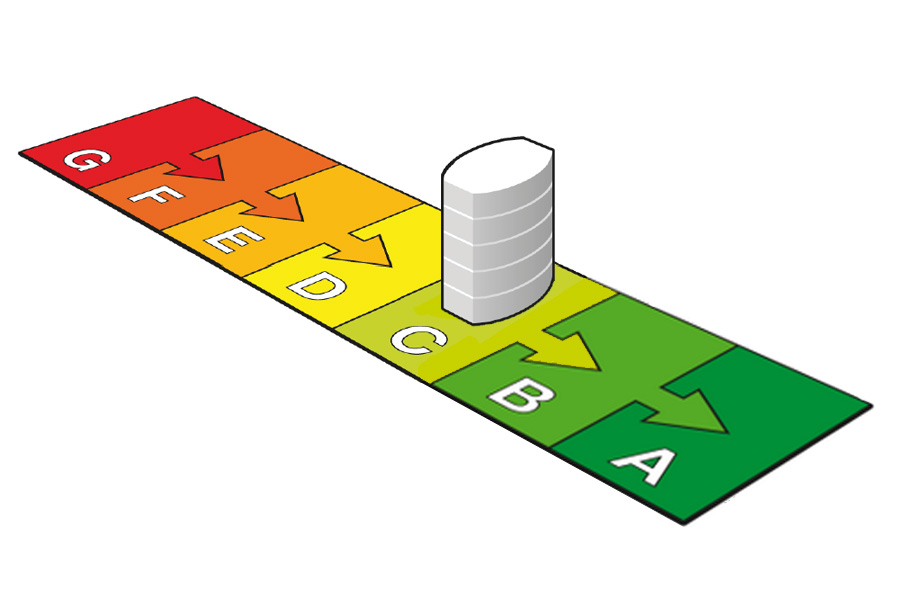
Inzicht in verbeterpotentieel voor gebouwen
De uitkomsten uit de analyses en voorspellingen van de studenten kunnen bijdragen aan een model dat energieleveranciers, gebouwbeheerders, bouw- en installatiebedrijven inzicht geeft in het verbeterpotentieel van het energieverbruik van gebouwen. Want om de klimaatdoelen van het Parijsakkoord te halen, staat de (bestaande) gebouwde omgeving nog voor een aantal uitdagingen: significante energiebesparing, zelf zoveel mogelijk energie opwekken, energie verbruiken op de momenten dat het duurzaam wordt opgewekt en het realiseren van alternatieven voor aardgas als bron van verwarming. Heb je dat op orde? Dan mag je rekenen op een ‘perfecte’ energielabel-score A+++.
Voor veel gebouwen is het nog niet zo ver. Daarom zijn data en voorspelmodellen nuttig, aldus Pellenkoft. ‘Die bieden periodiek inzicht voor onze klanten, zodat zij kunnen sturen om vanaf 2023 het verplichte energielabel C voor kantoorgebouwen te realiseren.’ En de studenten? Vattenfall gaat met vier studenten tien weken lang voortbouwen op de inzichten uit de hackathon, om tot een eindproduct te komen zoals een verbeterd voorspelmodel. Pellenkoft: ‘Zo kunnen zij meer leren over data science-projecten in de praktijk, en stomen we studenten heel gericht klaar voor werk na de studie.’
Meer informatie?
- Centre of Expertise Urban Technology
- Transitiethema Energy Transition
- Lectoraat Energie en innovatie
- Faculteit Techniek
- Energieleverancier Vattenfall
Daar krijg je ENERGIE van! (podcast) 🔌♻️
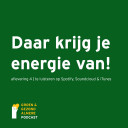
Het is één van de punten op de duurzaamheidsagenda van de Gemeente Almere: energie. En maar goed ook, want we gebruiken er heel wat van met elkaar. Hoe komen we er aan en hoe verzamelen we onze energie in de toekomst? Over die vraagstukken hebben verschillende Almeerders zich al gebogen.
Goed nieuws: deze mensen hebben antwoorden gevonden! In deze aflevering gaat presentatrice Nadia Zerouali weer in gesprek met jonge Almeerders die hun mening en dromen met ons delen, spreken we innovatieve ondernemer Luuk Wiehink over zijn app Earn-E én uiteraard weer een expert die gespecialiseerd is in dit onderwerp: Jeike Wallinga, lector aan hogeschool Windesheim. En we kunnen al met je delen dat deze verhalen je een hoop energie meegeven.
Te luisteren via Spotify, Soundcloud of iTunes
HvA kroont onderzoek naar slim laden van elektrische auto's
Onderzoek van SEEV4-City staat voor slimme laadtechnologieën voor elektrische voertuigen die hernieuwbare energiebronnen integreren. Daarmee willen de onderzoekers internationale steden inspireren.
Het onderzoek SEEV4-City (Smart, Clean Energy and Electric Vehicles for the City) van de Faculteit Techniek en Centre of Expertise Urban Technology is de grote winnaar van het ‘HvA Onderzoek van het Jaar’ 2021. Het onderzoek naar slimme laadtechnologieën voor elektrische voertuigen won zowel de jury- als de publieksprijs. Juryvoorzitter Geleyn Meijer roemde de onderzoekers om de aandacht die zij in hun onderzoek tonen voor zowel de stad als het onderwijs van de hogeschool.
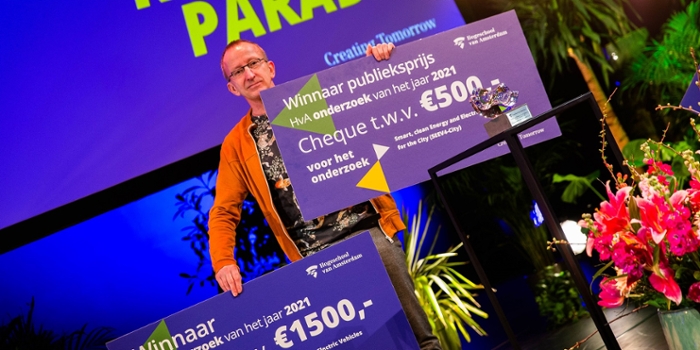
‘Het winnen van de prijs is een mooie erkenning van actieonderzoek waarin de HvA heeft geholpen om de volgende stap te zetten in de transitie van Amsterdam richting elektrisch rijden, slimmer gebruik van laadinfrastructuur en integratie van groene energie’, vertelt hoofddocent Urban Analytics Pieter Bons en betrokken bij het vijfjarige internationale onderzoek SEEV4-City.
SEEV4-CITY
Elektrische auto’s staan vaak ’s avonds aan de laadpaal. Dit zorgt voor ‘spitsuur’ op het elektriciteitsnet. Tegelijkertijd wordt veel zonne-energie die overdag wordt opgewekt nooit gebruikt. Dit kan anders. Batterijen van elektrische auto’s kunnen worden ingezet voor de opslag van duurzame energie. Een slimme laadpaal zorgt er vervolgens voor dat niet alleen de auto’s, maar ook bedrijven en huishoudens de duurzame energie op een later moment kunnen gebruiken. Resultaat: CO2-reductie, kostenbesparing, toename van energie-autonomie en een stabieler elektriciteitsnet. SEEV4-City onderzocht hoe dit op grotere schaal kan worden toegepast middels zes pilots in vijf Europese steden: Amsterdam (NL, 2x), Kortrijk (BE), Leicester (UK), Loughborough (UK) en Oslo (NO).
FLEXPOWER-PILOT VOOR SLIM LADEN
Hoe werkt dat in de praktijk? Bons: ‘Zelf heb ik aan de Flexpower-pilot gewerkt in Amsterdam. Hier werd voor 400 publieke laadpalen een tijdsafhankelijke laadsnelheid geïntroduceerd (Smart Charging-technologie). Met een Flexpowerpaal krijg je sneller energie als het rustig is op het energienet (’s nachts) of als er veel aanbod is van lokale groene energie (op een zonnige dag). Tijdens de avonduren (18:00-21:00) is er een piek in de energievraag van huishoudens en werd de laadsnelheid juist verlaagd om de belasting op het elektriciteitsnet te verminderen. Zo zorg je voor een goede spreiding van de energievraag over de dag. Simulatiemodellen gevoed door real-world data maakten het mogelijk om de impact van dit soort nieuwe laadprofielen direct te evalueren. Hier zit toekomst in, binnenkort begint gemeente Amsterdam alweer de kick-off van Flexpower 3!’
SUPERBATTERIJ IN JOHAN CRUIJFF ARENA
De tweede pilot in Amsterdam vond plaats in de Johan Cruijff ArenA . Hier werd met een superbatterij van drie megawatt geëxperimenteerd, die bestaat uit 148 tweedehands accu's afkomstig uit elektrische auto's. Onderzoeker Jos Warmerdam: ‘Slimme Vehicle2Grid (V2G)-technologie gekoppeld aan de batterij regelt, wanneer nodig en na toestemming van de eigenaar, dat de juiste hoeveelheid energie uit geparkeerde auto's aan het stadion wordt geleverd. Dat gebeurt in combinatie met de 7200 vierkante meter zonnepanelen op het dak van de Johan Cruijff ArenA. De duurzame energie dient als extra opslag en back-up voor het stadion, zodat bij stroomstoringen voetbalwedstrijden en popconcerten altijd kunnen doorgaan. De batterij vervangt daarmee twee vervuilende dieselgeneratoren. En door efficiënter energiegebruik zijn de elektriciteitskosten van het stadion lager.’
Het experiment kan een rol gaan spelen op publieke laadpalen, volgens Bons. ‘Een collectief wagenpark van elektrische voertuigen dat een mega batterij vormt voor de stad? Dat zou goed kunnen functioneren als buffer om het complexe systeem van vraag en aanbod, pieken en dalen op het elektriciteitsnet onder controle te houden, van elektrische auto’s tot omliggende huishoudens en bedrijven.'
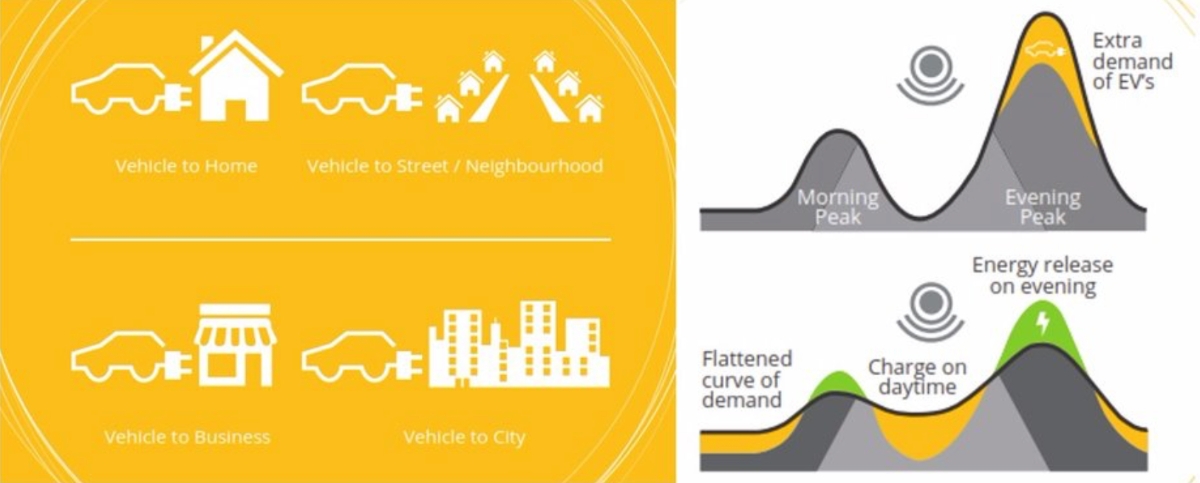
INTERNATIONALE SAMENWERKING VOOR INSPIRATIE
Vanwege de internationale samenwerking had SEEV4-City vijf jaar lang een educatief en inspirerend karakter. 'Steeds meer steden in Europa werken aan duurzame mobiliteit en de technische mogelijkheden voor slimme laadinfrastructuur', vertelt projectleider Mark van Wees. ‘Kijken we naar de internationale pilots, dan zien we steden met uiteenlopende situaties, niveaus en regelgevingen. Juist door die diversiteit in context kon een breder spectrum aan innovaties worden onderzocht.'
‘Kennis over de pilots werd open tussen de steden gedeeld', vertelt Renée Heller, lector Energie en Innovatie en betrokken bij het onderzoek sinds de opstart. 'Niet alleen over technische innovaties, ook over methodiek, handel op de elektriciteitsmarkt en beleid. Dat werd gedaan door middel van workshops, webinars, publicaties. Bovendien konden we zo een completer pakket informatie doorvoeren in ons onderwijs. We hebben minors, onderwijs- en transitiemodules ontwikkeld, zodat studenten actief mee konden doen middels data-analyses en experimenten met nieuwe businessmodellen.’
'Het is voor onderzoekers inspirerend en motiverend om samen te werken met collega-onderzoekers die met ons de mondiale doelstellingen en persoonlijke ambities delen', stellen Van Wees en Warmerdam. 'We staan nog maar aan het begin van elektrisch vervoer, en daarmee het opladen van elektrische voertuigen in Nederland. Dus de kennis en ervaring die bij deze pilots zijn opgedaan, gaan in de toekomst nog veel toegepast worden!'
INTERNATIONALE PARTNERS VAN SEEV4-CITY
SEEV4-City is een Europees project en een samenwerking tussen de Hogeschool van Amsterdam, de Gemeente Amsterdam, Johan Cruijff ArenA, Katholieke Universiteit Leuven, Avere, Polis, Cenex, stichting Cenex Nederland, Leicester City Council, University of Northumbria University, Amsterdam Energy ArenA en Oslo Kommune. Het project is gefinancierd door het Interreg North Sea Region Programme 2014 - 2020 .
HVA-ONDERZOEKERS VAN SEEV4-CITY
Renée Heller, Mark van Wees, Jos Warmerdam, Pieter Bons, Robert van den Hoed, Aymeric Buatois, Britt Broekhaus, Pieter Lommers, Bronia Jablonska, Hugo Niesing, Ramesh Prateek, Janna Boonstra, Gieta Inderdjiet.
Meer informatie
Website SEEV4-City
Centre of Expertise Urban Technology
Lectoraat Energie en innovatie
Twitter, LinkedIn & Facebook
Innovation Challenge: increasing the demand for elektricity when the sun is shining

Alliander is a group comprising various operating companies. As one of these operating companies, network operator Liander is responsible for the gas and electricity grid for a large part of the Netherlands and manages the energy distribution across all grids, day in day out. Liander’s professionals keep the lights on and the heat going at around 3 million homes and businesses in the Netherlands.
The number of requests from large business customers asking to be connected to the electricity grid or be given access to increased capacity is growing. At certain points in the electricity grid, capacity is scarce and the grid cannot always be upgraded quickly enough to meet this extra demand, which means that a transmission limit must be imposed on customers.
Therefore, we have decided on an Innovation Challenge. For this challenge, we are focusing on the problems caused by the large amounts of solar energy being generated. Because electricity generation by solar panels largely takes place at the same time and also in places where there has previously only been limited demand for electricity, there is a shortage of transmission capacity. Given that solar energy is difficult to control, we are looking for ways to shift the demand for electricity to, or increase it during, the hours when the sun shines the most. This way local balancing of supply and demand can be ensured.
We want to facilitate the development of solutions that stimulate the electricity consumer to consume more electricity when the sun is shining. This prevents us having to impose transmission limits and/or having to expand/upgrade the grid.
Do you have a good idea or do you want to read more about this challenge? Visit our Innovation Challenge on StartHubs via https://starthubs.co/en/alliander/zonnige-elektriciteitsvraag
Stay up to date
Get notified about new updates, opportunities or events that match your interests.

